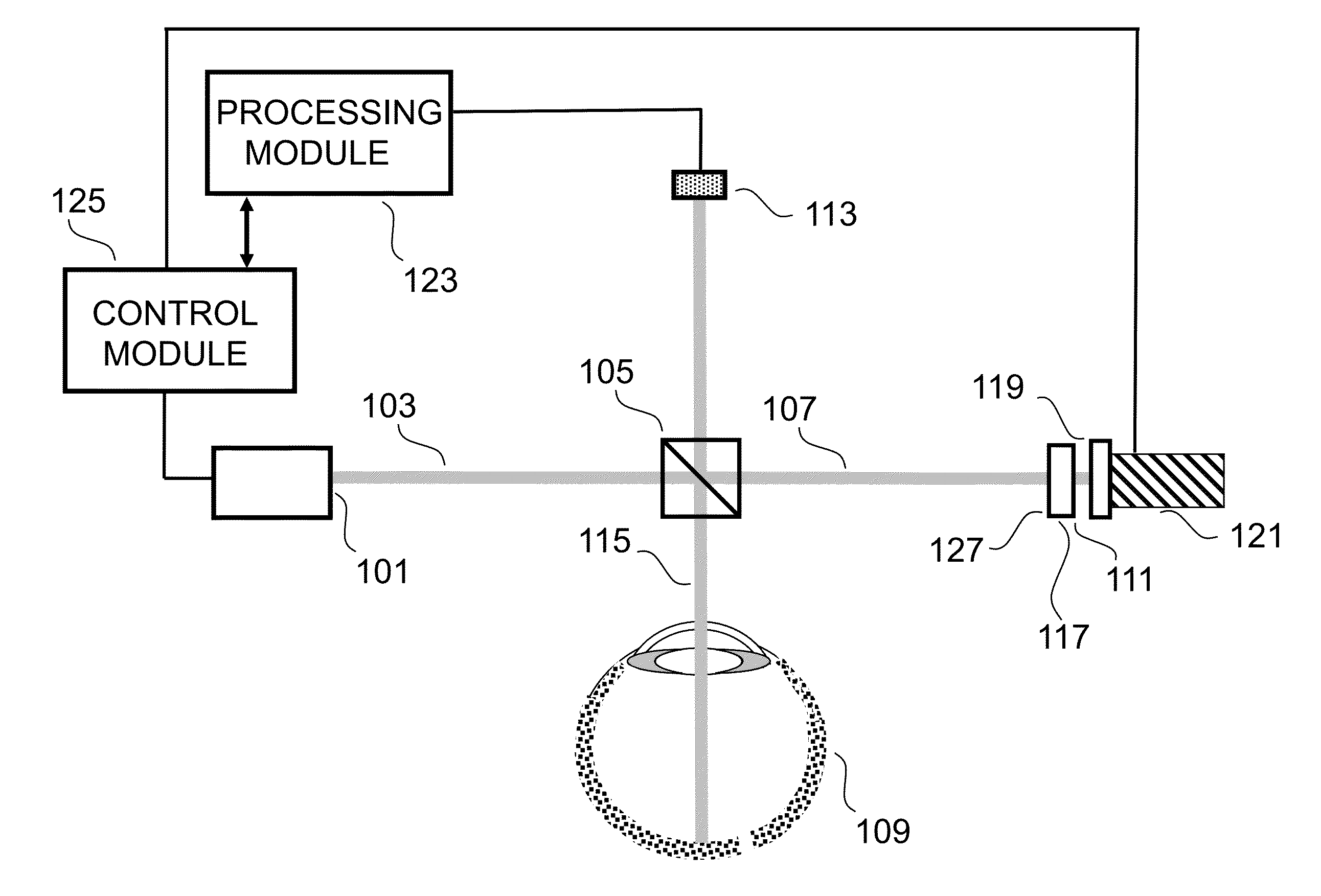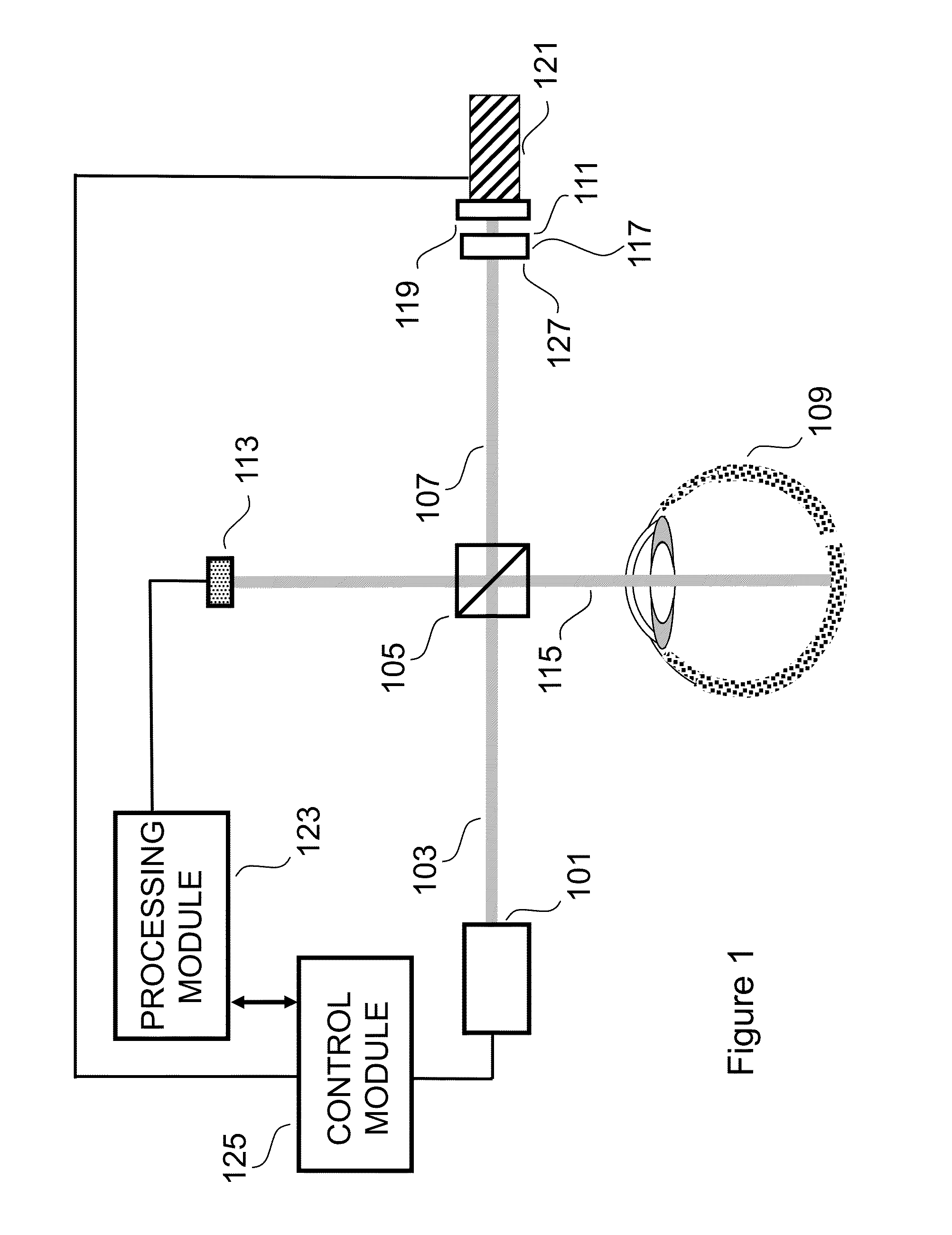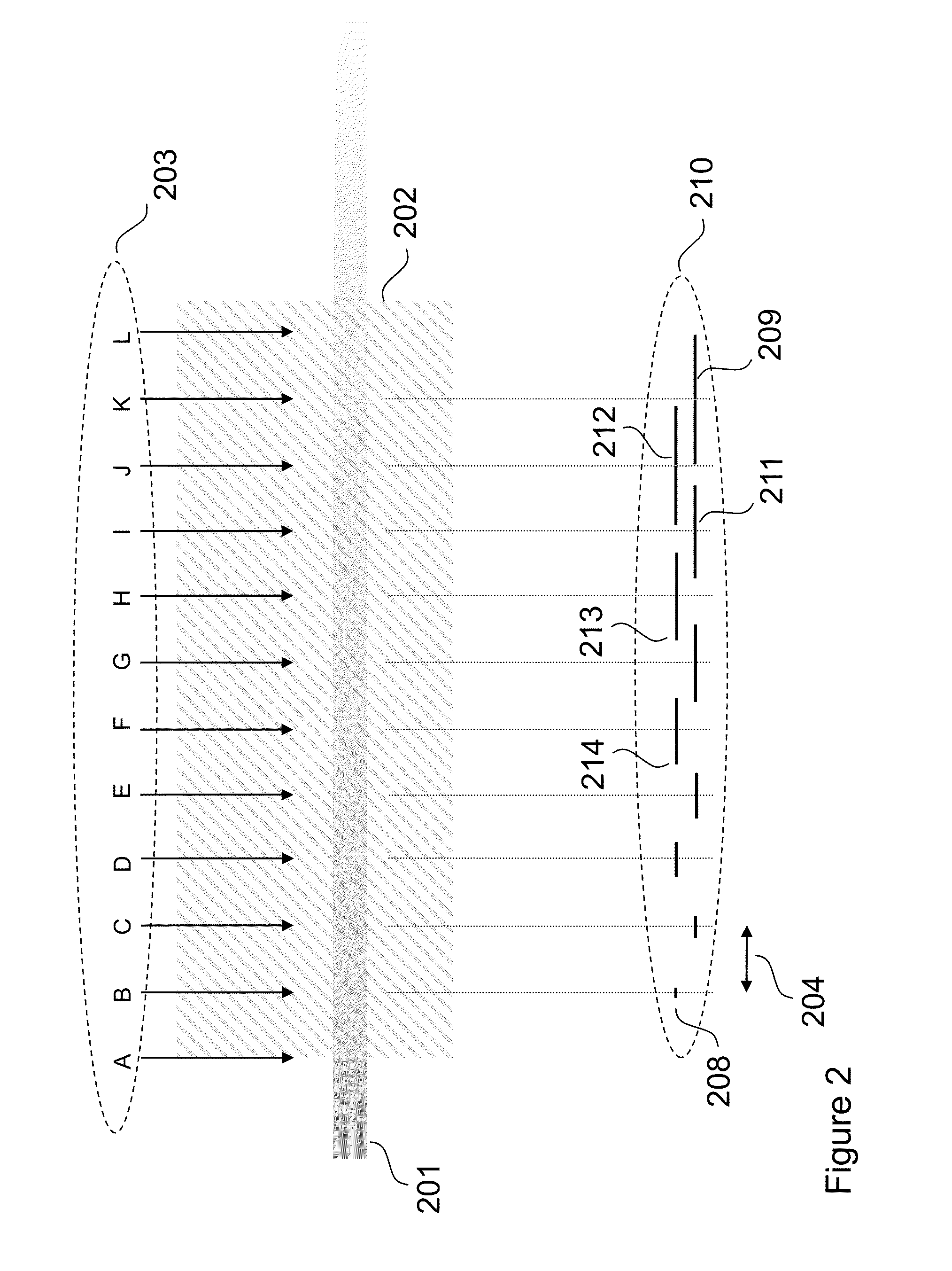Improved Multiple Reference OCT System
a multiple reference oct system and reference oct technology, applied in the field of non-invasive imaging and analysis techniques, can solve the problems of grating alignment sensitive, high cost, and high cost, and achieve the effect of eliminating crosstalk, not distorting the noise characteristics of the system, and low cos
- Summary
- Abstract
- Description
- Claims
- Application Information
AI Technical Summary
Benefits of technology
Problems solved by technology
Method used
Image
Examples
Embodiment Construction
[0034]The invention taught herein includes a device and method of non-invasively analyzing and imaging a target using optical radiation. The preferred embodiment includes a time domain OCT system, an example of which is included in the FIG. 1 illustration. Referring to FIG. 1, a broadband optical source 101 generates broadband output radiation 103, referred to as source radiation, that is directed at a beam-splitter 105. The beam-splitter 105 directs a component of the source radiation as initial probe radiation 115 towards a target 109 (for example the retina of an eye).
[0035]The beam-splitter 105 also transmits a component of the source radiation referred to as reference radiation 107 through an optical element 117 to a reference mirror 119 mounted on a translational device 121, such as a piezo device or an electro-mechanical translational device. The optical element 117 includes a partial mirror (or partial reflective surface) 111.
[0036]The combination of the partial mirror 111 a...
PUM
 Login to View More
Login to View More Abstract
Description
Claims
Application Information
 Login to View More
Login to View More - R&D
- Intellectual Property
- Life Sciences
- Materials
- Tech Scout
- Unparalleled Data Quality
- Higher Quality Content
- 60% Fewer Hallucinations
Browse by: Latest US Patents, China's latest patents, Technical Efficacy Thesaurus, Application Domain, Technology Topic, Popular Technical Reports.
© 2025 PatSnap. All rights reserved.Legal|Privacy policy|Modern Slavery Act Transparency Statement|Sitemap|About US| Contact US: help@patsnap.com



